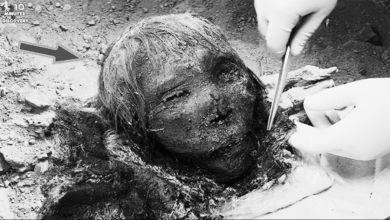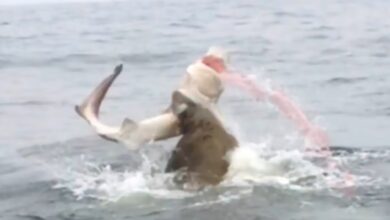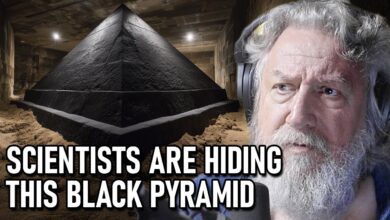“Revealing Historical Secrets: Discovery of a 3,800-Year-Old Water Cult Burial Site in Peru”
Archaeologists uncover burial site of ancient cult that revered water
Burial from time when ancient people of Peru began constructing large buildings and pyramids, researchers say

Archaeologists in Peru have unearthed a strange burial site at a pre-Incan temple dedicated to a water cult dating back to about 3,800 years, a discovery they say could “redefine” the understanding of South American history.
Four individuals – two children, a teenager, and an adult – were found buried on their sides in a position facing mountains at the site along with symbolic offerings such as stone pendants and snails.
Researchers had previously associated the temple site with an ancient water cult from over 3,000 years ago.
The latest excavation covered a small section of 51sqm, or about one per cent of the temple site, where archaeologists unearthed boulder walls held together using clay plasters as well as pottery fragments.
These walls had curved corners characteristic of the architecture of the Early Formative period spanning about 1800 BC to 900 BC.

This was a period when the ancient people of Peru began constructing large buildings, including early pyramids, using ceramics.
The newly unearthed burials predate Peru’s most famous archaeological site, Machu Picchu which was built about 600 years ago, and “stands as a living testimony” to the ancient civilizations inhabiting the continent, researchers say.
“Early ceramic fragments found on the site are similar to those observed in other important settlements such as Gramalote, in the Moche valley, and Huaca Negra, near the coast in the Virú valley,” archaeologist Feren Castillo Luján said.
There’s evidence that humans have lived in Peru for over 15,000 years, but it was only around 5000-3000 BC people in coastal Peru began creating societies with political systems.
After this, starting from about 2000 BC, there’s evidence of an institutionalised religion emerging among the people.
It is still unclear what these ancient people called themselves or how the neighbouring people referred to them.
Very little is currently known about the circumstances under which complex belief systems emerged among the people.
Scientists suspect the positioning of the bodies facing the hills may yield some clues as mountains have a symbolic significance in Andean cosmology.
Since mountains are also a source of water for irrigation in the dry landscape, researchers suspect the bodies were likely placed there in reverence to the element.

Archaeologists cautioned that the temple site under excavation faces “serious threats” due to the increase in agricultural cover surrounding the area.
They appealed to local people to protect the “invaluable cultural heritage” with collective responsibility in “investigating, preserving, and protecting these relics for future generations”.
“The tourist potential of the area is immense, but beyond that, we must think about the importance of valuing and preserving our cultural identity,” the archaeologist said.
“Time is pressing, and actions to preserve this site must be taken before it is too late,” he added.








